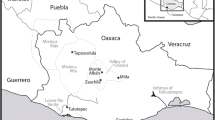Abstract
Over the last twenty years, there has been a discernible increase in the number of scholars who have focused their research on metal production, working and use in antiquity, a field of study which has come to be known as archaeometallurgy. Materials scientists and conservators have worked primarily in the laboratory while archaeologists have conducted fieldwork geared to the study of metal technology in a cultural context with laboratory analysis as one portion of the interpretive program.
Similar content being viewed by others
Author information
Authors and Affiliations
Additional information
Author’s Note
This very brief description of traditional metalworking is part of a larger study of style, technology and group identity among itinerant brass casters in West Bengal, India. For greater detail, refer to Lee Horne, “Brasscasters of Dariapur, West Bengal: Artisans in a Changing World,” Expedition, 29 (3) (1987), pp. 39–46.
Rights and permissions
About this article
Cite this article
Horne, L. A study of traditional lost-wax casting in India. JOM 42, 46–47 (1990). https://doi.org/10.1007/BF03220414
Issue Date:
DOI: https://doi.org/10.1007/BF03220414




